Introduction
From concerns over whether Tether maintains adequate backing for its dollar-based stablecoin USDT, to allegations of its use by criminals, money launderers and scammers, Tether and USDT are no strangers to controversy.
In February 2021, Tether agreed to pay $18.5 million in penalties to the New York Attorney General (NYAG), and cease any further trading activity with New Yorkers. The NYAG alleged that Tether and its related entities made “false statements about the backing of the “tether” stablecoin and about the movement of hundreds of millions of dollars.”
As if that wasn’t enough, the Wall Street Journal now reports that Tether is under investigation for possible violations of sanctions and anti-money laundering rules.
This case study will examine the difference in transaction behavior of Tether’s USDT on different blockchains, and suggest that authorities need to pay attention to these differences in combating illicit flows.
For clarity, this case study will use “Tether” to refer to Tether, the company that issues the stablecoin, and “USDT” to refer to Tether’s dollar-based stablecoin.
What is Tether’s USDT?
Tether’s USDT is a prominent stablecoin, a type of crypto-asset designed to maintain a stable value, typically pegged to a fiat currency like the US dollar.
Introduced in 2014 as Realcoin, it was rebranded to Tether, with the token symbol USDT, the following year. The core concept behind USDT is to offer a more stable alternative to volatile crypto-assets, making it easier for traders and investors to navigate the often turbulent crypto-asset market. By maintaining a 1:1 peg with the US dollar, Tether aims to provide a reliable store of value and a medium of exchange within the crypto-asset ecosystem.
However, Tether’s history has been intertwined with controversy and scrutiny. Questions have been raised about the transparency of its operations, particularly
regarding the composition and adequacy of its reserves. Critics have also expressed concerns about the potential for market manipulation and the impact of any
potential instability at Tether on the broader crypto-asset market. While Tether has made efforts to address these concerns and increase transparency, the lingering doubts have led to regulatory scrutiny and legal challenges.
Despite the controversies, USDT remains one of the most widely used stablecoins.
USDT plays a significant role in facilitating trading and transactions within the crypto-asset market, which is why USDT is available on a multitude of blockchains, including Ethereum, Tron and EOS.
However, the transaction behavior of USDT on different blockchains varies significantly, such that USDT ought to be treated as different products on different
blockchains when examining transactions through a regulatory lens.
USDT Transaction Behavior on Ethereum
While most analysis of USDT transaction behavior tends to focus on volume, because transaction costs can vary significantly across blockchains, it is more useful to examine the number of transfers to evaluate blockchain transaction activity.
For instance, on the TRON blockchain, transaction costs are minimal, whereas transactions on the Ethereum blockchain can be very high, especially during periods of strong demand.
One way to determine if transaction activity on a given blockchain is organic is by use of a measure known as the R2 or the R-squared number, which is also known as the coefficient of determination.
The R-squared number basically tells us how much one variable determines the other. For example, the effect of time on the number of transfers of a crypto-asset.
Generally, we would not expect time to be a strong determinant of the number of transfers of crypto-assets if such transactions were organic, or performed by human actors. In life, we don’t generally expect that the number of financial transfers a person makes increases simply as time passes.
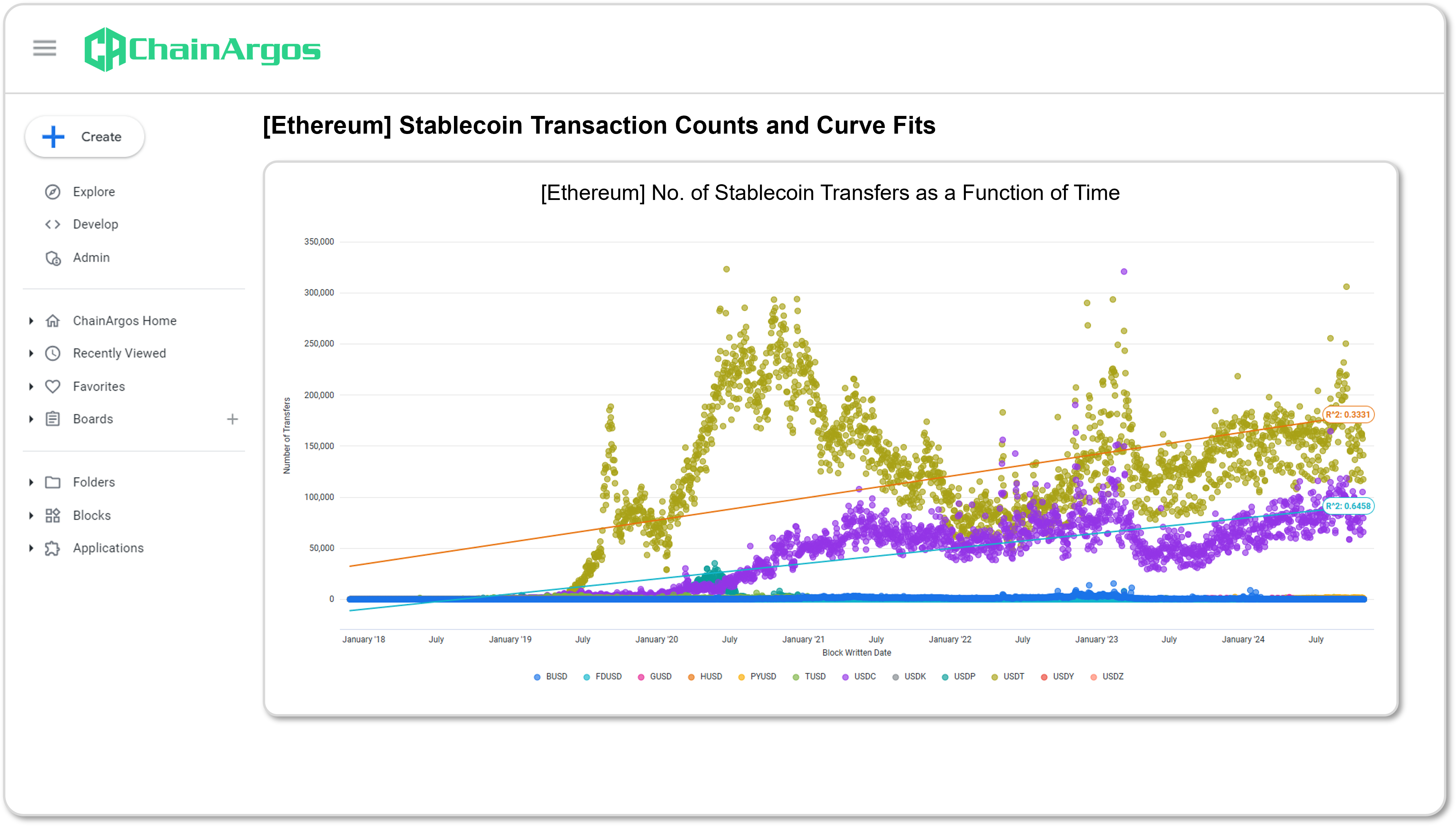
Figure 1. Number of stablecoin transfers for various stablecoins on the Ethereum blockchain as a function of time, with USDT in gold and with an R2 number of 0.3331.
In Figure 1. the number of transfers of dollar-based stablecoins issued by centralized stablecoin issuers are plotted against time, to determine if time is a strong
determinant of the number of transfers.
The closer the R-squared number is to 1, the more time is a determinant of the number of transfers. As we can see in Figure 1. the number of transfers of USDT
on the Ethereum blockchain is not strongly influenced by time, with an R-squared number of 0.3331.
This would suggest that USDT transfers on the Ethereum blockchain are determined by something other than just time.
USDT Transaction Behavior on TRON
EURI is issued on two blockchains, the Ethereum blockchain and the BNB Smart Chain (“BSC”) which right off the bat should provide some clues as to who the likely users are for EURI.
The Top Senders of EURI
Of the top ten senders of EURI, most appear to be associated with Binance, with the exception of 0x35139b5a567f19de1b0ae70a30318b1ad5874de5 (“0x351 Address”) which stands out because it is the fifth largest sender of EURI.
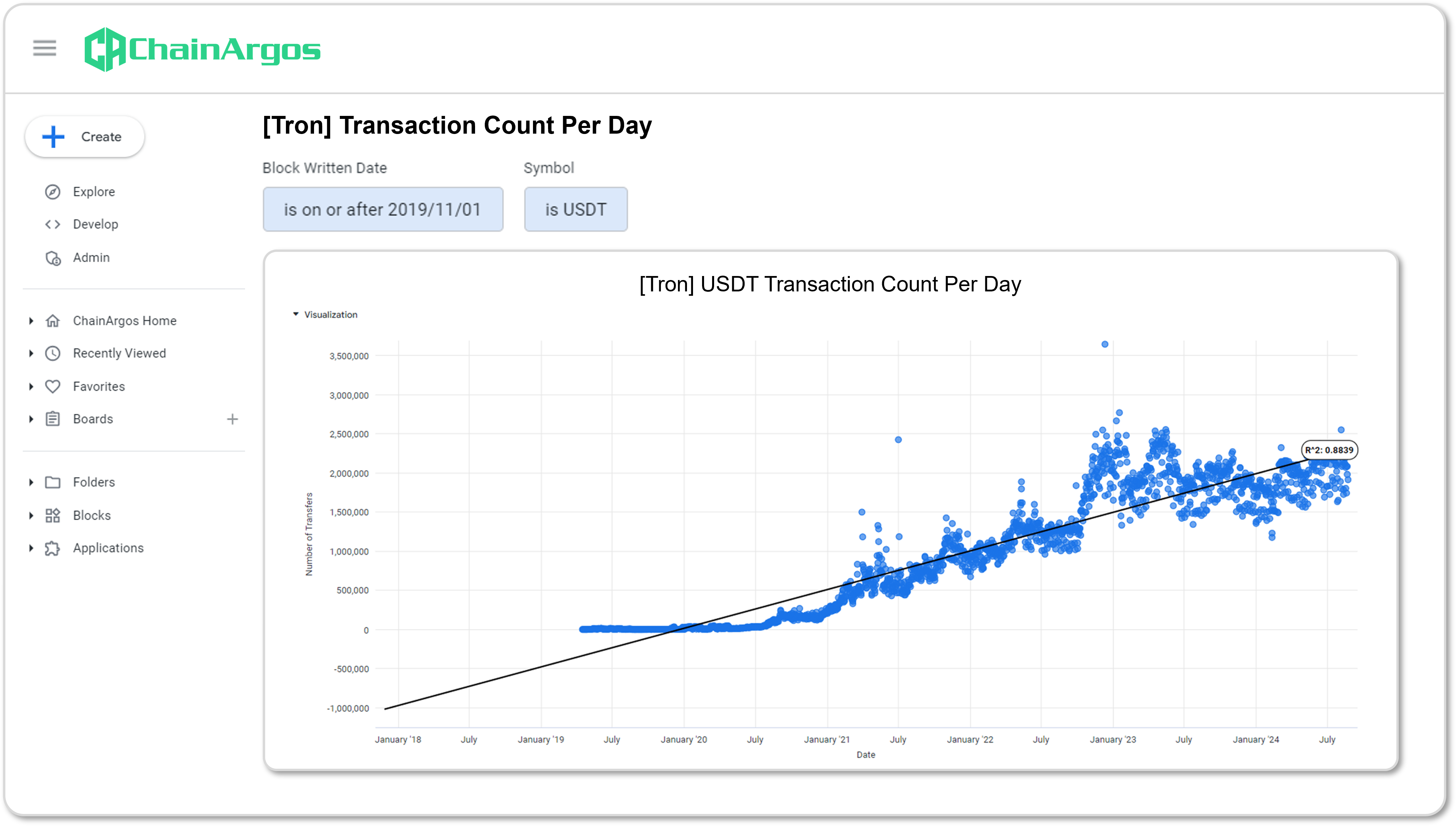
Figure 2. Number of USDT transfers on the TRON blockchain as a function of time.
Figure 2. shows the number of USDT transfers on the TRON blockchain as a function of time. We can immediately observe that time is a strong determinant of the
number of USDT transfers on the TRON blockchain, with an R-squared number of 0.8839.
In other words, the number of transfers of USDT on the TRON blockchain increases in an almost linear manner as a function of time, which is strange to say the least.
In typical economic life, we expect there to be a seasonality when it comes to the number of transfers of money. For instance, we would expect to see a spike in
payments just before the peak Christmas shopping season, around Black Friday sales, and just ahead of a new school term.
This seasonality in transfers means that while we would expect there to be peaks and troughs in the number of transfers over a year, unless population growth was linear, we generally wouldn’t expect the number of transfers to increase primarily due to the passage of time.
This bizarre transaction behavior comes to light when examining the number of transfers as opposed to the volume of transfers. The number of transfers looks simply at how many transactions were made, so a transfer for $1 and a transfer for $100,000 count as one transfer each.
Of course a hundred thousand transfers of $1 each and one transfer for $100,000 have very different implications. This is why we also need to analyze the average USDT transfer size for USDT transactions on the TRON blockchain.
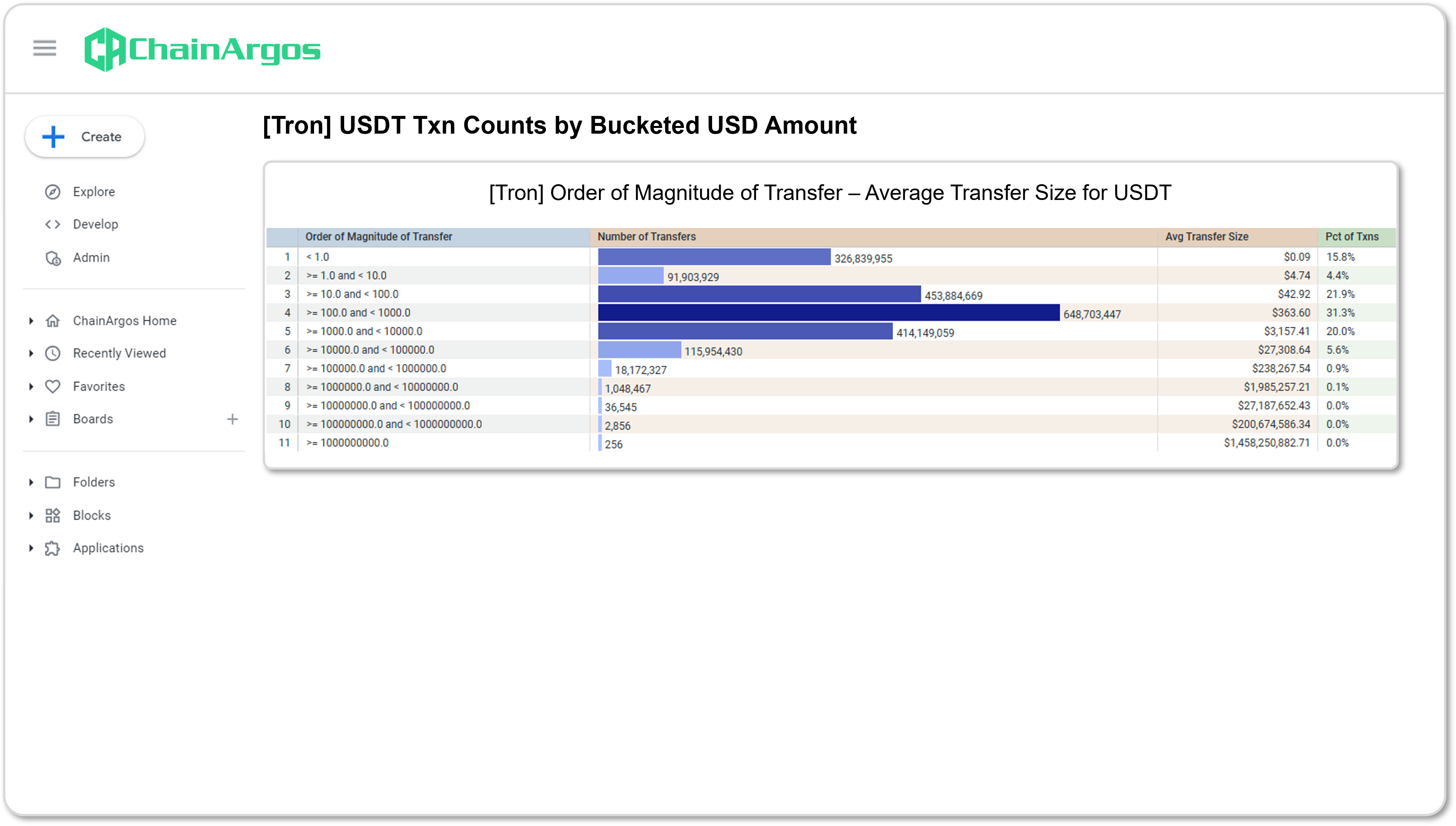
Figure 3. USDT transaction counts on the TRON blockchain, bucketed according to size.
Figure 3. buckets the sizes of USDT transfers on the TRON blockchain in orders of magnitude and what stands out immediately is that a whopping 15.8% of USDT transfers on the TRON blockchain are for less than $1.
In fact, the average USDT transfer size for transactions less than a $1 is for just 9 cents on the TRON blockchain.
If a regular bank customer made repeated transactions worth 9 cents every single day at all hours of the day, in the time it took you to read this paragraph, that person’s bank account would in all likelihood have already have been frozen.
But the TRON blockchain can support a flurry of economically meaningless USDT transactions because of its very low transaction fees, which are sometimes zero thanks to the TRON Energy and Bandwidth features which support free transfers.
Applying Benford’s Law to USDT
We can also apply Benford’s law to USDT transactions on TRON, to show that these aren’t organically-occurring transactions.
Benford’s Law, or the law of anomalous numbers, or the first-digit law, is an observation that in real-life sets of numerical data, the leading digit is likely to be small.
Benford’s Law is often used to detect fraud, for instance in accounting reports.
In real-life numbers, the number 1 appears as the leading significant digit about 30% of the time, while 0 appears as the leading significant digit less than 5% of the time.
For any given set of numbers generated by real life, we would expect them to obey Benford’s Law.
If the USDT transactions on TRON were the result of organic, economically-motivated real-life transfers, then we would expect to see that they obey Benford’s Law, even for transactions worth less than a dollar.
So let’s look at the transactions below $1 for USDT on Tron and see whether they conform to Benford’s Law.
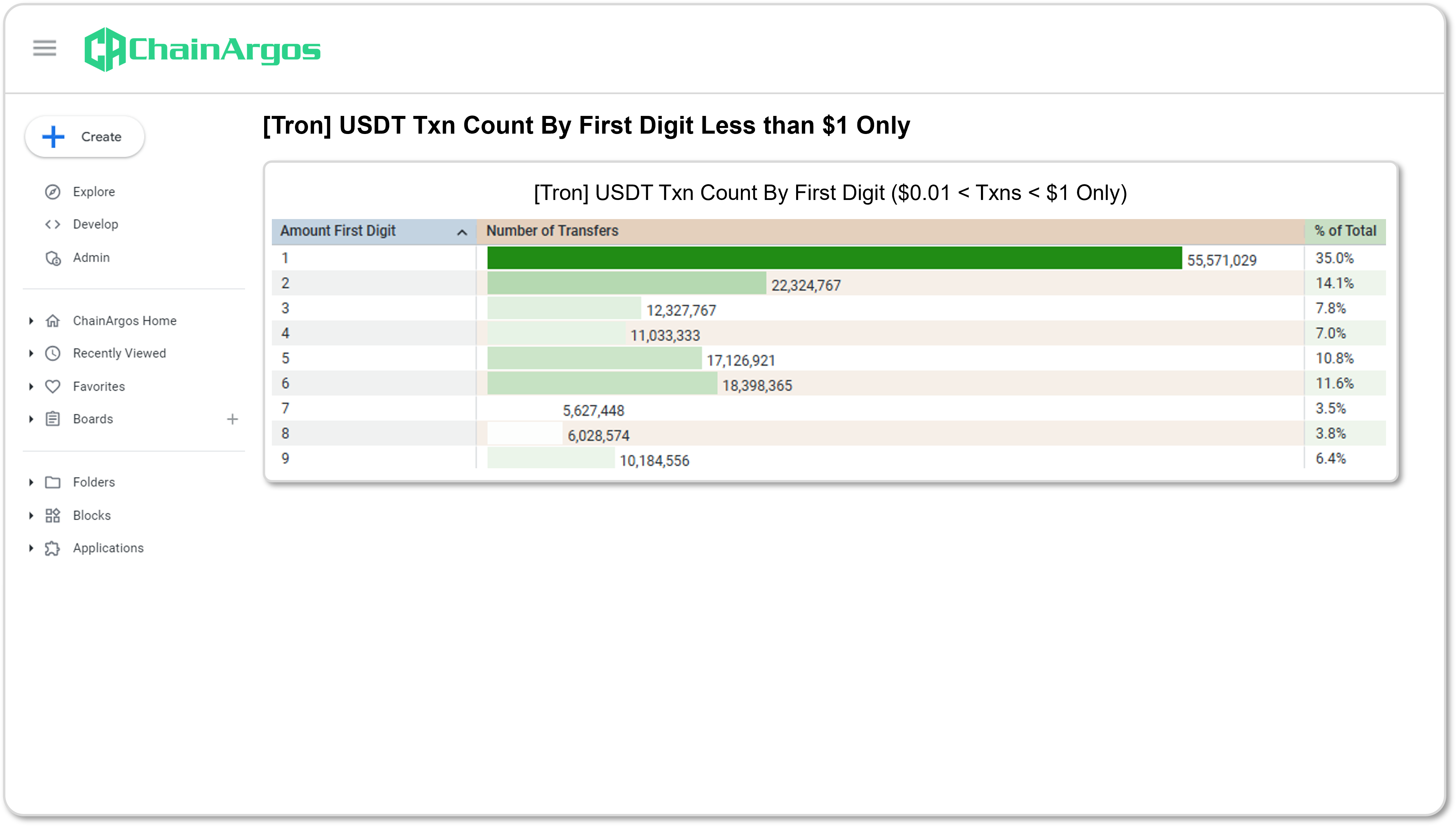
Figure 4. USDT transaction count on the TRON blockchain by first digit for transfers.
Visually the difference between USDT transactions on TRON that are less than $1 and more than $0.01 and the normal Benford distribution is quite stark.
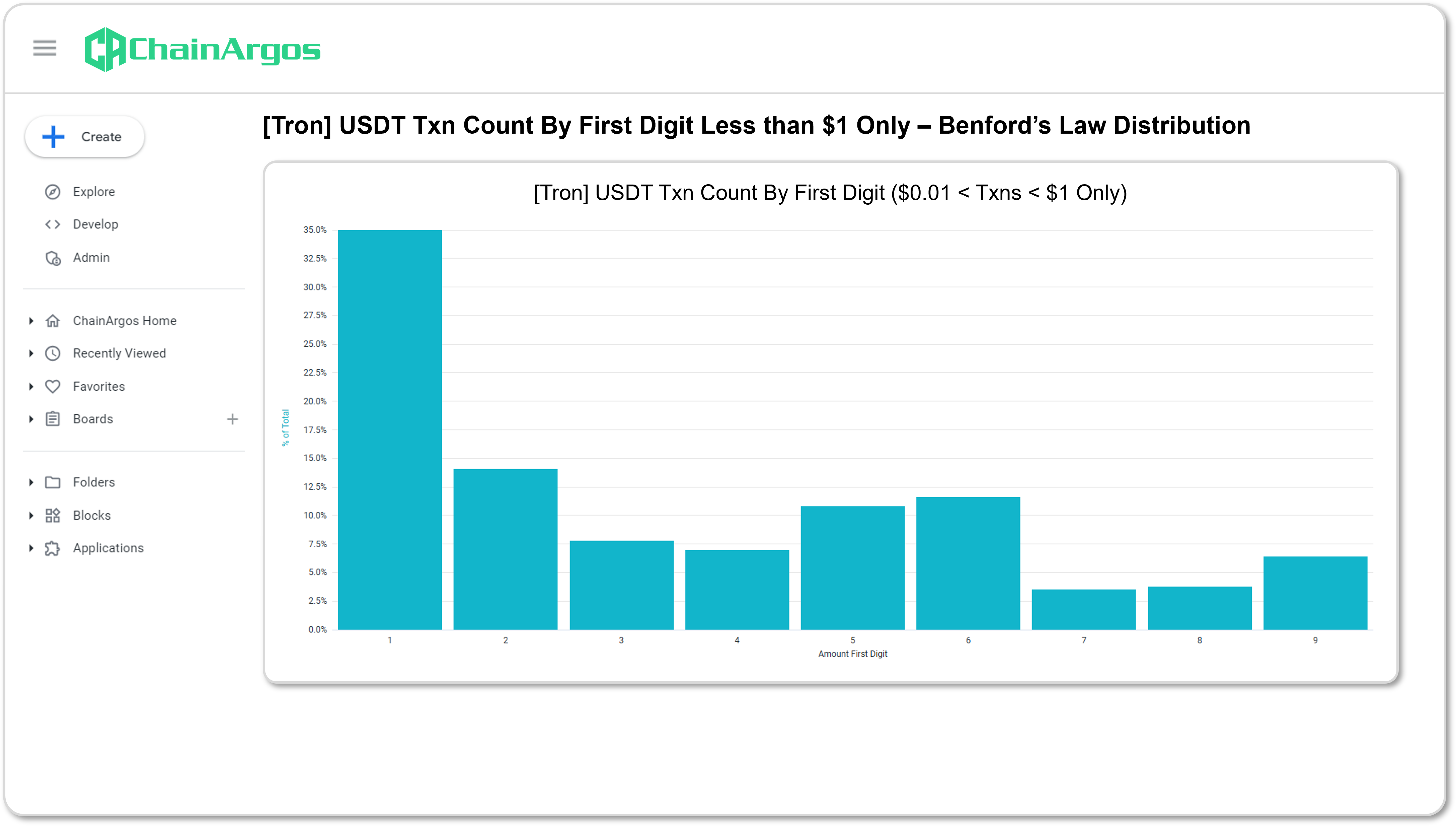
Figure 5. USDT transaction count by first digit for less than $1 and above 1 cent as a percentage of the total.
Figure 5. displays the percentage of the first digit of the transaction count for USDT on the TRON blockchain between $1 and above 1 cent.
When this distribution is measured against Benford’s Law, it is apparent that the USDT transfers on the TRON blockchain don’t conform with what we would expect to see in real-life, as shown in Figure 6.

Figure 6. USDT on TRON first digit of number of transfers versus expected Benford’s Law distribution.
Why make these transactions?
One of the challenges with permissionless transfers of value is that there are no intermediaries evaluating the economic motivation for making any particular transaction, and that opens such systems to abuse.
Blockchains like TRON can viably support tiny, economically meaningless transactions which actually serve two important functions – creating the impression there is significant transaction activity on the blockchain (to increase its perceived value), and providing enough signal noise in an attempt to mask illicit transfers.
Sending seemingly trivial amounts back and forth on a blockchain is not the most sophisticated way to obfuscate illicit transactions, but does make it slightly more challenging for authorities to determine which transactions were genuinely intended to transfer value.
Because the TRON blockchain does not charge meaningful transaction fees, it’s no surprise that it has become the preferred blockchain network with which to conduct illicit transfers of USDT.
USDT’s transaction behavior on different blockchains suggests it’s an entirely different product on different blockchains, with different users and different intentions.
What are the risks?
One of the biggest risks for stablecoins and their users is when equivalent versions of the same stablecoin appear on different blockchains.
For instance, the BUSD dollar-based stablecoin was a product issued by Paxos Trust LLC, a New York-licensed trust company approved to issue the BUSD stablecoin on the Ethereum blockchain.
However, Paxos Trust LLC’s BUSD launch partner Binance, was also creating a “wrapped version” of the BUSD stablecoin on the BSC blockchain.
The BUSD stablecoin on the BSC blockchain was not a regulated product, but was intended to have been backed by BUSD on the Ethereum blockchain (“wrapped”) before being minted for use on the BSC blockchain.
In January 2023, Binance was revealed by ChainArgos to have minted over $1.4 billion worth of unbacked BUSD on its BSC blockchain.
By February 2023, the New York Department of Financial Services ordered Paxos Trust LLC, to stop minting BUSD for failing to properly supervise its relationship with its partner Binance.
From the perspective of an end-user, BUSD on the Ethereum blockchain was interchangeable with BUSD on the BSC blockchain, and that belief allowed Binance to mint over $1.4 billion worth of “free money” until ChainArgos exposed this gap.
Similarly, authorities are only just realizing that USDT on the TRON blockchain is functionally different from USDT on the Ethereum blockchain even though both versions of USDT are issued by the same company, Tether.
Without appreciating the difference between USDT on different blockchains, authorities may be misdirected by action such as “freezing” USDT on the Ethereum blockchain, without noticing that the vast majority of illicit USDT transactions occur on the TRON blockchain.

